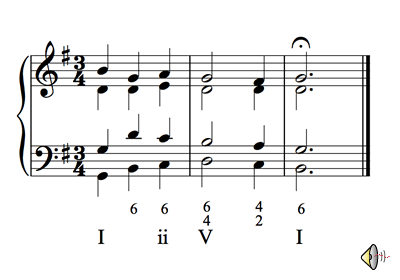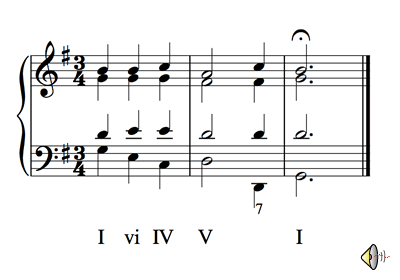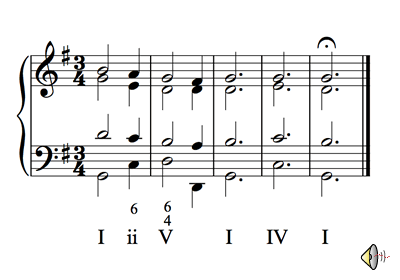Reference : cadence
A chord progression at the end of a phrase. There are several types of cadences.
Perfect Authentic Cadence
The perfect authentic cadence. V (dominant) - I (tonic). Both chords must be in root position and the highest note in the tonic chord must be the tonic:

Imperfect Authentic Cadence
The Imperfect Authentic Cadence uses the degrees V - I like the Perfect Authentic Cadence, but one or both chords use inversion, or the highest note in the tonic chord is not the tonic. Two examples.
Imperfect because both chords use inversions:

Imperfect because the tonic chord highest note is not the tonic:

Half Cadence
Half cadence or semi-cadence. A chord progression that ends in V (dominant):

Deceptive Cadence
Deceptive or interrupted cadence. V (dominant) - vi or V - IV:

Plagal Cadence
Plagal cadence. IV (subdominant) - I:

